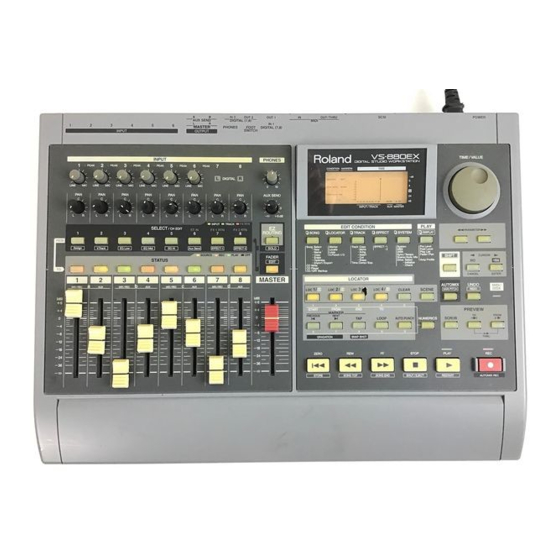
Roland VS-880EX Manuals
Manuals and User Guides for Roland VS-880EX. We have 5 Roland VS-880EX manuals available for free PDF download: Owner's Manual, Quick Start Manual, Application Manual, Service Notes
Roland VS-880EX Owner's Manual (192 pages)
Roland Owner's Manual Digital Studio Workstation VS-880EX
Brand: Roland
|
Category: Musical Instrument
|
Size: 4.56 MB
Table of Contents
Advertisement
Roland VS-880EX Application Manual (146 pages)
Digital Studio Workstation
Brand: Roland
|
Category: Musical Instrument
|
Size: 1.39 MB
Table of Contents
Roland VS-880EX Quick Start Manual (186 pages)
Digital Studio Workstation
Brand: Roland
|
Category: Musical Instrument
|
Size: 9.27 MB
Advertisement
Roland VS-880EX Quick Start Manual (52 pages)
digital studio workstation
Brand: Roland
|
Category: Musical Instrument
|
Size: 4.65 MB
Table of Contents
Roland VS-880EX Service Notes (20 pages)
digital stuio workstation
Brand: Roland
|
Category: Music Mixer
|
Size: 4.79 MB




